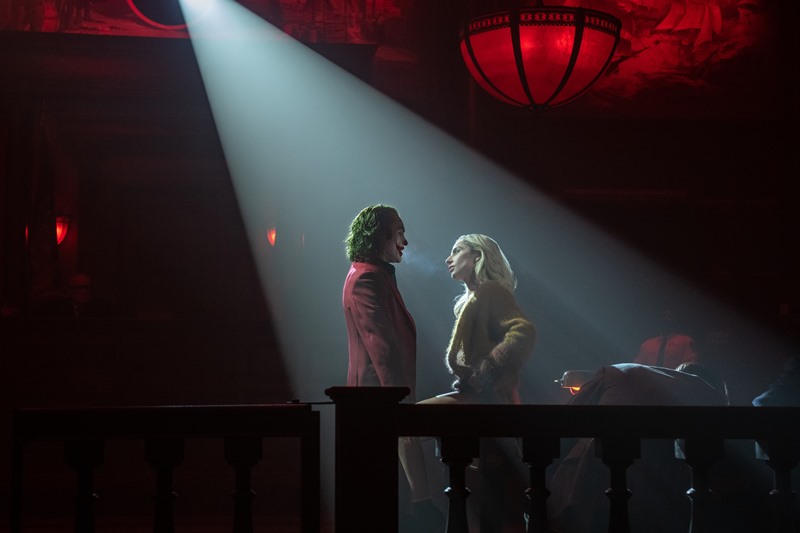Review: ‘Joker: Folie à Deux’ deliberately and mistakenly loses focus

A scene from ‘Joker: Folie à Deux’ courtesy of Warner Bros. Pictures
‘Joker: Folie à Deux’ combines the title character’s murder trial with a poorly concocted musical.
There are videos and writings in which psychologists and psychiatrists attempt to analyze and diagnose comic book characters’ mental wellness. It’s not surprising many of these heroes and villains have some form of disorder or psychosis that is often more complex than just being a psychopath or narcissist. Yet, most of the stories focus on good vs. evil, ignoring the reasons they do what the do as their actions outweigh the need to understand. But Joker: Folie à Deux is consumed with why the title character is the way he is, examining the effects of his past and mental health on his behaviour.
Following the events of the first film, including the live execution of TV talk show host, Murray Franklin (Robert De Niro), Arthur Fleck (Joaquin Phoenix), a.k.a. Joker, is now an inmate at Arkham Asylum. His defense attorney (Catherine Keener) is determined to convince a jury that he suffers from multiple personality disorder (now known as dissociative identity disorder), caused by a traumatic childhood and triggered by a violent altercation. In opposition, Assistant District Attorney Harvey Dent (Harry Lawtey) plans to prove Arthur was fully aware of his actions. And Arthur is just going with the flow — until he meets Lee, a.k.a. Harley Quinzel (Lady Gaga), an Arkham patient obsessed with the Joker. Suddenly, Arthur has a reason to live and embrace his alter ego’s swagger.
Once again, writer-director Todd Phillips takes an unconventional approach to the DC characters, while still sprinkling canon throughout the narrative. From Lee’s background and subtle costumes to Thomas Wayne’s television appearances, from Arkham Asylum to Gotham city, it’s clear the film is unfolding in the DC universe, even if it’s not a typical comic book movie. Most of the picture unfolds within the confines of Arkham and the courtroom, largely limiting the audience’s perspective to Arthur’s experiences, which is challenging since fantasy and reality frequently intersect.
Arthur always daydreamed to escape the dreariness of his life, imagining a successful stand-up career or a thoughtful girlfriend (Zazie Beetz). This film takes it a step further as now Arthur fantasizes in musicals. Whether real or imaginary, he sings, dances and even taps. Sometimes it’s on stage, in front of an audience, and other times he performs within the walls of Arkham Asylum. However, this turn of events even better explains Lady Gaga’s casting in the role of Harley, as the pair have several duets and harmonize well together. The songs are mostly from the 1950s and ‘60s, including “That’s Life,” “Get Happy,” “If My Friends Could See Me Now” and several reprisals of “Gonna Build a Mountain.”
However, all these efforts to be unconventional and further push the boundaries of comic book movies produce a haphazard and repetitive picture with too many musical interludes and the most unexciting approach to two of comic’s most fascinating personalities. Phoenix’s Arthur is weak and unfunny, while Joker is overdramatic and overwhelmed by love. Similarly, Lady Gaga’s performance is tempered with brief bursts of irrationality, fuelled by her fixation with Joker’s chaotic behaviour. She becomes the star of Arthur’s fantasies, which are vibrant but superficial, unnecessarily padding the film’s inflated runtime. Better titled, “Joker: Trial of the Century,” the movie would have also been improved if it reigned in its focus.
Director: Todd Phillips
Starring: Joaquin Phoenix, Lady Gaga and Brendan Gleeson
Review: ‘Joker: Folie à Deux’ deliberately and mistakenly loses focus
#Review #Joker #Folie #Deux #deliberately #mistakenly #loses #focus





